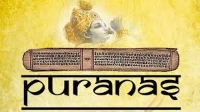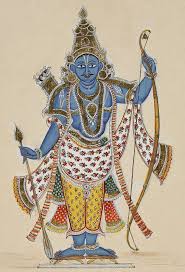Dwadasha stothra 4 : Verse 5
yadi nAma parO na bhavEta hariH kathamasya vashE jagadEtadabhUt |
yadi nAma na tasya vashE sakalaM kathamEva tu nityasuKaM na bhavEt || 5 ||
We do not have any ownership on our body, mind, kriya. Even when we do kriye it is not guaranteed that we will get desired results. This proves that there is something beyond our control.
If Hari was not supreme, how did this world continue in His control. If the world is not in His control, why has it not attained eternal bliss.
There are several philosophes which negate the authority of God:
- Jains say that there is no God, the world runs on karma. Even in Vedic culture, mimsasaru say that doing karma such as Yagna is the cause of evolution in the world, there is no God.
- There is “Vima Philosophy” which says world is imaginary. This is shankara’s philosophy. Vima – Ignorance, Ma – Knowledge.
- There is “Mala philosophy” which says creation is due to passion (Kama, Krodha) of human beings. Mala – Dirt.
- There are some people who say “Time “causes creation. Kaala dharma. Time bound. Eg: rainy season causes rain.
- Sankhyaru say Creation happened due to trigunas – sattva, rajas, and tamas. Jada prakruthi creates everything.
Acharya says all these are Jada, and can’t cause creation. Creation (Kriya) happens only due to intention. Jada doesn’t have a brain to think and intend. Vibration is the first step of creation.
The Yukthi (logical argument) here is that any entity which is independent will never be miserable as it will always choose happiness. As it is a universal experience that all souls are not eternally happy, they are dependent. The other logical statement is that the world needs a Chethana to control it and run it in an orderly fashion and He is the Supreme Being.
There are three types of expression that has to be kept in mind while analyzing any vedic literature.
Darshana bhashe – telling things the way one sees it. And the way it is. Darshana bhashe is of two types:
- Whatever conflicts with what is stated before and after that is Darshana bhashe. This naturally has to be interpreted in tune with what is stated before and after or else it has to be rejected.
- Whatever is merely a restatement of some other Darshana quoted for refutation or to show the hollowness of it.
Samadhi bhashe – The glory of the Supreme God is conveyed by samadhi bhasha. This naturally has to be accepted as it is. Telling about things as it is.
Guhya bhashe – Guhyabhasha is that which is different from samadhi and darshana bhasha. In the case of the Guhyabhasha, its deeper meaning has to be taken, rejecting the apparent meaning.
Using these 3 types of expression totally a combination of 81 types of expression can be found in puranas.
There are 7 types of styles of narration in Puranas:
- Vythasaha -Difference – Kala, desha, Vyakthi – Mixing up events, place, people – can be understood properly by reading proofs of events in other texts
- Prathulamya – telling sequences without maintaining chronology in puranas Eg: a) Krishna left Palace, b)Duryodhana fell in pond thinking it as floor. But Krishna was present during the time when he fell.
- Gomutri – Without linear sequence
- Pragasa – not telling certain events.
- Ukshana – Sprinkling – telling things without meaning. Eg: Putting scent in marriage hall
- Sudura – Telling things with meaning, in detail, but still might be in Guhya bhashe
- Saduhu – Telling things with meaning, in detail in Samadhi bhashe



